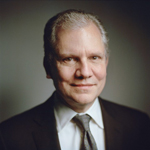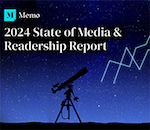|
|
Arthur Sulzberger Jr., publisher of the New York Times, which lost $14.3M in Q1 and has roiled bridge and chess fans by dropping both columns, will discuss “NYT’s future” June 15 at Hunter College. It wonders about its ‘sustainability.”
It will be a rare public appearance for Sulzberger and will give NYT fans and critics a chance to question him.
Bridge and chess buffs, angered that their less-than-a-column B&W features were dropped to save space, noted the lavish use of color and B&W art in yesterday’s 64-page edition.
Color photographs occupied the entire six columns on pages A6, B1 and B11. There were 12 five-column pictures, 10 four-column pictures and numerous two and three-column pictures on the other pages. About one-third of the “news hole” is pictures and graphics.
Some critic is sure to ask how the art department became so dominant at NYT. Stories are also being criticized as too long. Michael Kinsley, writing in the Atlantic in 2010, said the “wordiness” of NYT writers is driving readers from the paper.
“On the internet, news articles get to the point,” said Kinsley.
Critics can also point to almost daily stories that question the candidacy of Hillary Clinton for president. Much editorial space is available for coverage of the pros and cons of gay marriage, head injuries in football, earth warming and other topics that are favorites of Sulzberger and editors. Some topics are almost never mentioned, such as the 1982 Tylenol murders and the battle over the Jewish religious boundary called eruvim in the Hamptons.
A response by reader David Engle in the May 17 Wall Street Journal, which had written a piece praising bridge, said: “It is stunning to me that NYT stopped the column. I can’t think of any other decision that NYT has made that I disagree more with. Perhaps WSJ could sign Phillip Alder so he could continue this incredible column.”
Baquet, Jill Abramson Successor, Speaks
 |
Also on the program, hosted by Hunter president Jennifer Raab, will be Dean Baquet, who replaced Jill Abramson as executive editor last May.
Abramson, the first woman to hold that post in the history of NYT, was ousted after being on the job since September 2011.
An NYT story May 14, 2014 said “People in the company briefed on the situation described serious tension in her relationship with Sulzberger who was concerned about complaints from employees that she was polarizing and mercurial. She also had clashes with Baquet.”
A particular flap was Abramson’s job offer to Janine Gibson, a senior editor from The Guardian of the U.K.
Gibson was going to be installed as co-managing editor alongside Baquet “without consulting him.” This “angered” Baquet who brought the matter to Sulzberger’s attention.
NYT Stock Hit $70 in 1997
NYT’s stock was as high as $70 in 1997, dipping to $31 in 2006 and currently to around $13.
Helping to cause its loss of 14.3M in Q1 was a $40.3M pension charge related to lump-sum payments to former employees who took retirement. NYT sought retirements from 100 editorial staffers. Some got two years’ pay.
The $14.3 loss compared with a $1.7M profit in the same 2014 period. Revenues slipped 1.6% to $384.2M largely due to a 5.8% decline in ad sales. Print ad sales fell 11.1% while digital spots increase 10.7% to $42.3M which represents 28.2% of total advertising.
Digital subscribers grew 47,000 to 957,000, said CEO Mark Thompson who said NYT “got off to a solid start in early 2015” as it maintained digital momentum.
NYT Worries About “Sustainability”
The announcement of the program had this copy from NYT:
“Over 164 years, The New York Times newspaper has been a principal source of news and editorial comment for readers in this country and around the world. Over the last 25 years, The Times Company has developed its various digital platforms to the extent that 60 million readers interact with The Times on a monthly basis.
“The Times has more than two million paying subscribers, almost half of whom are pure digital subscribers, which is remarkable considering that it began offering digital subscriptions only four years ago.
“The Times remains a premier source of news and information and has won 117 Pulitzer Prizes, including three just this year. Nevertheless, in an era when online communications giants measure their revenue in many billions, questions inevitably arise about the sustainability of The Times, news and business questions to be discussed at this evening.”



 Trump Media & Technology Group today reported a $58.2M net loss on $4.1M in 2023 revenues, a disclosure that drove its stock price down 22.6 percent to $47.96.
Trump Media & Technology Group today reported a $58.2M net loss on $4.1M in 2023 revenues, a disclosure that drove its stock price down 22.6 percent to $47.96. Barry Pollack, an attorney at Wall Street’s Harris St. Laurent & Wechsler, has registered Julian Assange as a client with the Justice Dept. “out of an abundance of caution.”
Barry Pollack, an attorney at Wall Street’s Harris St. Laurent & Wechsler, has registered Julian Assange as a client with the Justice Dept. “out of an abundance of caution.” Paramount Global to slash 800 jobs in what chief executive Bob Bakish calls part of an effort to “return the company to earnings growth"... Rolling Stone editor-in-chief Noah Shachtman is exiting at the end of the month due to disagreements with chief executive Gus Wenner over the direction the magazine is taking... The New York Times broke the $1 billion barrier in annual revenue from digital subscriptions in 2023... Press Forward is investing more than $500 million to strengthen local newsrooms.
Paramount Global to slash 800 jobs in what chief executive Bob Bakish calls part of an effort to “return the company to earnings growth"... Rolling Stone editor-in-chief Noah Shachtman is exiting at the end of the month due to disagreements with chief executive Gus Wenner over the direction the magazine is taking... The New York Times broke the $1 billion barrier in annual revenue from digital subscriptions in 2023... Press Forward is investing more than $500 million to strengthen local newsrooms. The majority of news articles are read within the first three days of publication, according to a recent report.
The majority of news articles are read within the first three days of publication, according to a recent report. The Los Angeles Times gives pink slips to 115 people or 20 percent of its newsroom staff... TIME is also laying off about 30 employees, which is approximately 15 percent of its editorial staff... The Baltimore Banner, which was launched by Stewart Bainum in 2022 after he failed to buy the Baltimore Sun, added 500 subscribers per day in the three days following Sinclair Broadcast Group's deal to purchase the Sun.
The Los Angeles Times gives pink slips to 115 people or 20 percent of its newsroom staff... TIME is also laying off about 30 employees, which is approximately 15 percent of its editorial staff... The Baltimore Banner, which was launched by Stewart Bainum in 2022 after he failed to buy the Baltimore Sun, added 500 subscribers per day in the three days following Sinclair Broadcast Group's deal to purchase the Sun.


 Have a comment? Send it to
Have a comment? Send it to 
No comments have been submitted for this story yet.